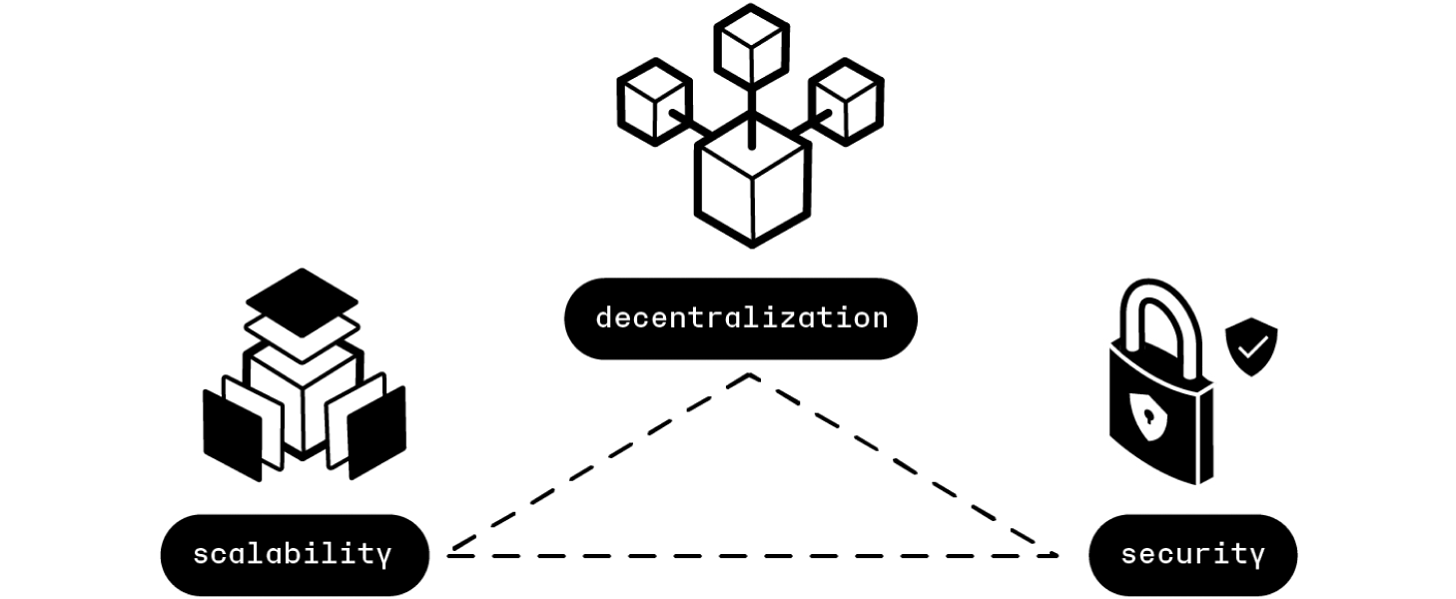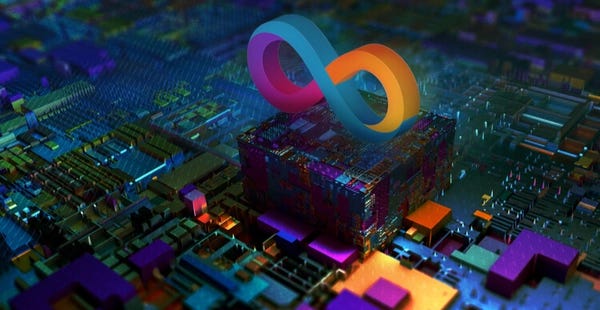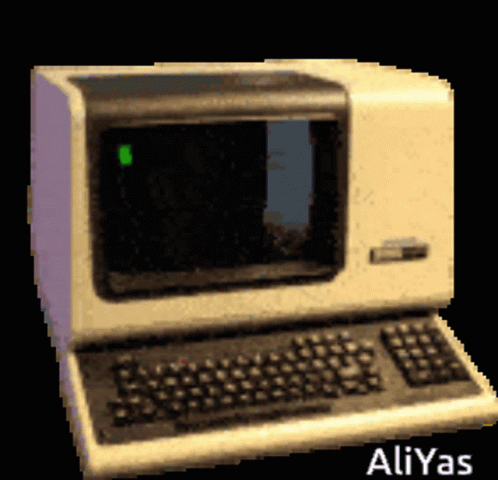Most Important Milestone for Bitcoin after 14 years?
TL;DR Bitcoin users can soon start utilizing full-featured DeFi, dApp and other features. But there's a catch.

Since its inception Bitcoin blockchain has been one of the most powerful distributed networks to date. However, this comes at a cost. Reliability and security trades off by slow transaction speed. There’s second con as well - since its launch in 2009, Bitcoin lacks smart contracts functionality which has substantially limited its real world use cases.
Interestingly, looks like this is about to change. Internet Computer Protocol (ICP) has just recently announced that they will release in 2023 fully-supported one-to-one BTC backed "wrapped Bitcoin” on their chain called ckBTC. In short, it will provide Bitcoin users capability to gain access to completely new features like DeFi and decentralized applications. 14 years since launch.
But hey, why ckBTC is important development milestone in Web3 space? I’ve made some research.
Outline of this overview is following
First, let’s understand what kind of practical value smart contract feature can provide to BTC holders and how it can be utilized today.
Secondly, we will discover what Internet Computer Protocol and it’s features.
Important milestone for Bitcoin users, community and future
With Internet Computer’s ckBTC implementation, Bitcoin being major layer-1 crypto will be taken many steps closer to better usability (read: transaction speed) without compromising security and adding Decentralized Finance use cases. Things such as loans, various applications like social media, NFT’s, gaming, metaverse. Ecosystem is interesting and you can check out it here.
Now holders of Bitcoin can utilize their assets in much diverse, secure and virtually native-way with practically no fees. Also, they do not have to limit themselves to Bitcoin blockchain but can hop easily to another networks without worrying about losing their funds.
How to enter the BTC-ICP ecosystem?1
To receive ckBTC:
User has BTC and wants ckBTC.
User obtains ckBTC minter address and sends funds to this address.
Wait-time up to 72 confirmations (up to 12 hours of time)
Start using ckBTC in ICP ecosystem
To get back to BTC:
User retrieves the withdrawal address.
User moves ckBTC assets to withdrawal address.
User sends desired amount of ckBTC to desired final destination BTC address (native Bitcoin blockchain network)
Confirmation of transaction
Whole back and fourth process described above is relatively simple. But only if one is technical and experienced command-line user. As of writing this, process is still in development stage and funds may get lost if addresses or parameters are mistyped. Anyway, public testing is already possible.
As always, remember to test this at your own risk 😉
A few words a.k.a basics about Internet Computer Protocol
For those who are unfamiliar with Internet Computer (IC) project, essentially it’s a smart contract protocol which primary focus is on storing data and running decentralized applications natively on blockchain. A Swiss “non-for-profit” organization called DFINITY foundation has list of ex-Google, ex-IBM heavyweight programmers, ETH Zurich researchers from cryptographic field. There must be something fundamentally novel to get backed by such a notorious venture capitals as A16z and Polychain.
We know that storing data in decentralized way is typically 1) costly and 2) slow. IC claims that their costs of storing data is as low as 5 USD compared to Ethereum which is estimated to cost as high as 79 million USD (!) on yearly basis. This difference sounds ridiculous. However, although both Ethereum and IC are utilizing smart contract architecture - IC’s value proposition has been emphasizing data storage utility in mind from day one, whereas Ethereum playing on more general level. There’s little asterisk for IC as well. Although decentralized, IC uses power of data centers to run its operations. Partly this explains the speed of protocol vs. other L2 players in the space.
From day one, IC has been designed to be intercompatible with major chains. Because of the unique canister smart contract architecture, there’s no need for cross-chain bridges like in Ethereum ecosystem. For those unfamiliar with bridges, they are used to exchange and move tokens from one blockchain to another (e.g. from Matic/Polygon to Ethereum). Historically, cross-chain bridges were “the weak” vulnerable points of each ecosystem, usually due to suboptimal security practices. Actually, year 2022 was reportedly the record year for such targeted hacks.
Architecture of IC
Every major blockchain project out there has to brag about they have came up with some special way to solve blockchain trilemma challenge.

High level architecture of Internet Computer is simple. There are four base layers:
Canisters can store up to gigabytes of data and able to execute it using bytecode written in WebAssembly.
Subnets are the home for canisters. Subnets are acting as a independent “small” blockchains
Nodes can be in form of rack servers. This is the place where subnets are running. Acting as a independent “small” blockchains.
Data centers are the entities where all the nodes are running.
To visualize all this orchestra familiarize yourself with graphic below.
Security on the protocol level is handled by chain-key cryptography (hence also the prefix for ckBTC). Key takeaway here is to remember is that ck-digital signature is distributed among all the subnets. This means that in case of node fault(s), compromise or other unexpected error - security state of blockchain network won’t be affected. Security evolves in dynamic way as new nodes are added and parts of signatures are replicated to new subnets as well.
Not Proof of Stake or Proof of Work either
Because of the aforementioned unique four-layer architecture, IC isn’t actually neither PoS nor PoW network. Implementation is called Proof-of-useful-work (PoUW). Founders believe that benefits of PoUW consensus mechanism are superior compared to most industry-recognized mechanisms such as Proof of Stake which possess risk of 51 percent of attack or Proof of Work which is energy intensive and inefficient w.r.t. practical outcome (although more secure).
Tokenomics a.k.a how ICP project economics work
While virtually every blockchain-related project has one chain-token, IC has two of them 😄. Okey, laughs aside - there is real reason behind this which is tied to unique architecture.
So, in short there are two native tokens called:
ICP which is used to manage blockchain network. Inflationary by nature
Cycles which acts as stablecoin. Converted from ICP. Used to pay for computation resources, basically canisters. Token is deflationary
Internet Computer utilizes same logic like in Ethereum with a few slight differences. Unlike in Ethereum network, there’s no minimum amount requirements of ICP tokens to be staked. Secondly, staked tokens receive the more rewards and voting power the longer they are locked in network for validation purposes.
Unlike in Ethereum or other comparable blockchain networks like Solana, there are no “gas fees” in ICP network. Instead, Cycle-token is used by decentralized app developers to prepay for computation resources like canisters responsible to run their solutions. Thus, end users don’t have to pay for services used. This could be comparable to situation where users don’t have to pay for AWS/Azure/GCP cloud instances which they are “technically” interacting with in web2 applications.
ICP token price has been performing a bit like Credit Suisse or any of those 9999 altcoins out there 😶. Nevertheless, It’s good to highlight that token price doesn’t necessarily always correlate with true value and fundamental potential of project.
Final thoughts - BTC & ICP - better together?
At its core, the idea of ckBTC is great. At the same time move from DFINITY is obviously tactical. As tier-1 blockchain, Bitcoin has lots of users and it’s in the ICP’s interest to capture as many new users on their network as possible. Obviously, situation is a win-win for both sides as bitcoin users can take advantage of considerably better transaction speeds, lowers costs and open completely new use cases around DeFi and more.
From other perspective, it’s a noble idea to close the gaps and connect the blockchain ecosystems which are in Web3 space, honestly speaking, quite fragmented. True is that 98 percent of projects out there will eventually fade away and only strong ones (= who have real value proposition) will remain. What is “real value” project definition anyway? Being backed by big capital firms does not guarantee success.
My sincere want is finally start to see more web2-grade user experience designs which could already contribute to half of the success 🤔.
Personally, although I find ICP’s technology/decentralized data center architecture being impressive with all the speed benefits, from user perspective - ecosystem offering is bit a bummer as of now. There are a few good dApps for everyday use cases around finance and assets tokenization but that’s not enough if comparing to other existing L2 blockchains such as Cosmos or Polygon. On the other side, Bitcoin users previously didn’t have even this luxury minimum so it’s arguably a big leap forward. For all interested to dig deeper, I warmly suggest to familiarize yourself with ICP project.
I would like to have your opinion:
Do you feel like Bitcoin is lacking new smart contract-based features and would they be useful for you? Is this tactically right turn from Internet Computer Protocol to create such a integration?
Thanks for taking time reading this weeks’ post, hope you received value from it. Share the knowledge with your family & friends and/or subscribe. Thanks!
ICP GitHub repository: https://github.com/dfinity/ic/tree/master/rs/bitcoin/ckbtc/minter






